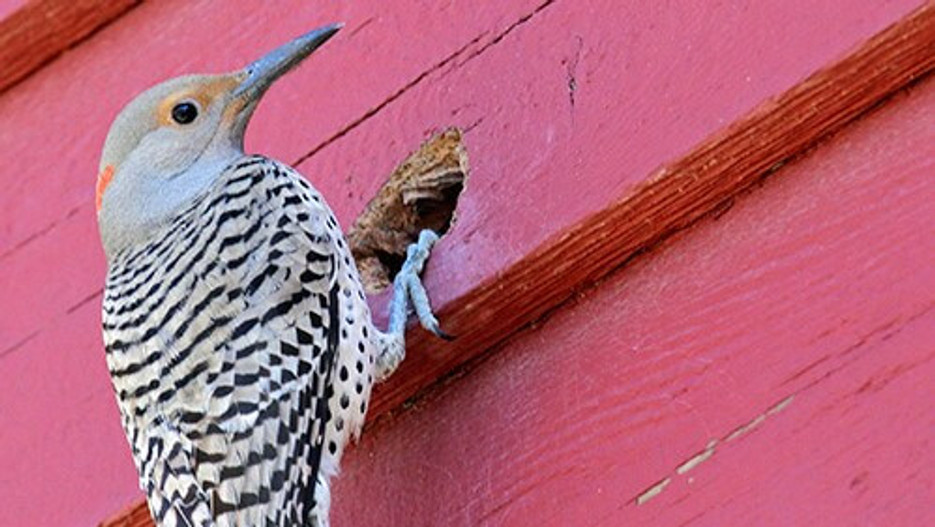Please add the schema tags below
Fascinating Facts About Woodpeckers & Their Impact on Property
Woodpeckers are not only interesting creatures but also notorious for causing damage to homes and commercial properties. Here are some fun and informative facts about these birds that you might not know—some of which may make you consider woodpecker deterrents.

1. Woodpecker Species in North America
North America is home to 22 woodpecker species, with the Downy Woodpecker, Hairy Woodpecker, Pileated Woodpecker, and Northern Flicker being the most common. One of the largest is the Lewis Woodpecker, measuring up to 11 inches long. Interestingly, a woodpecker’s tongue can extend up to 4 inches, which helps them extract insects from deep within trees. Their average lifespan ranges from 4 to 11 years, depending on the species. Importantly, woodpeckers are protected under the Federal Migratory Bird Treaty Act, making it illegal to harm or kill them without severe penalties.
2. Woodpecking Speed and Its Impact
A woodpecker can peck up to 20 times per second or produce 8,000-12,000 pecks per day! While fascinating, this relentless activity can wreak havoc on residential and commercial structures. Woodpeckers can damage various types of siding (cedar, redwood, plywood, etc.), utility structures, and even metal surfaces like gutters and antennas, as they search for insects and mates.
3. Damage to Commercial Siding
Woodpeckers frequently target siding, fascia boards, and foam architectural elements, leaving behind cone-shaped holes less than an inch in diameter. Over time, this can lead to moisture intrusion and structural damage. If left unchecked, woodpeckers may even create nesting sites within walls, further compromising the building's integrity.
4. Damage to Trees
Woodpeckers, especially migratory species like the Yellow-Bellied Sapsucker, can damage decorative and fruit trees during their migration in spring and fall. While the drilling rarely kills the tree, it makes it vulnerable to diseases and insect infestations. Commonly affected trees include pines, birches, spruces, and fruit trees.
5. Woodpecker Drumming and Attraction
Drumming intensifies during fall (September to December) as woodpeckers create winter roosts and signal to mates. The sound can attract more woodpeckers, potentially leading to even more extensive damage to your property as the birds drill into walls, roofs, and other surfaces.
6. Additional Interesting Woodpecker Facts
- Shock Absorption: Woodpeckers have specialized skulls that act as shock absorbers, allowing them to peck without injury.
- Communication: They drum not only for food but to communicate territory boundaries or attract mates.
- Diet: While primarily insectivores, some species, like the Acorn Woodpecker, store nuts in holes drilled into trees or wooden structures.
Protecting Your Property from Woodpeckers
Given their propensity for causing structural damage, it’s crucial to implement bird control measures. Some popular woodpecker deterrents include:
- Visual Deterrents (e.g., reflective tape, decoys)
- Auditory Devices (e.g., sound deterrents mimicking predator calls)
- Physical Barriers (e.g., netting, siding protectors)
Woodpeckers are fascinating birds, but their destructive habits can lead to costly repairs. If you're dealing with woodpecker-related damage, Bird B Gone offers various humane solutions to help protect your property. Reach out for expert advice on deterrents and installation services.
For more information about woodpecker deterrents, contact Bird B Gone at (800) 392-6915 or email nobirds@birdbgone.com.

